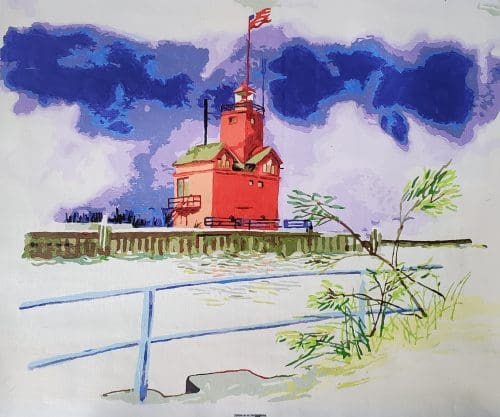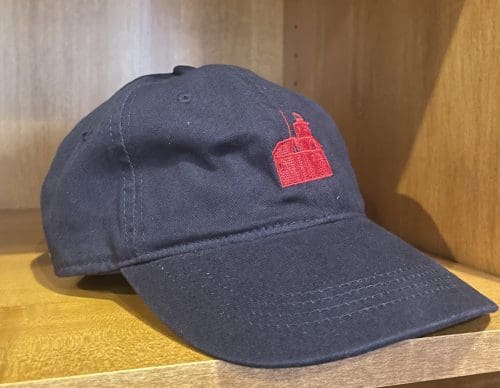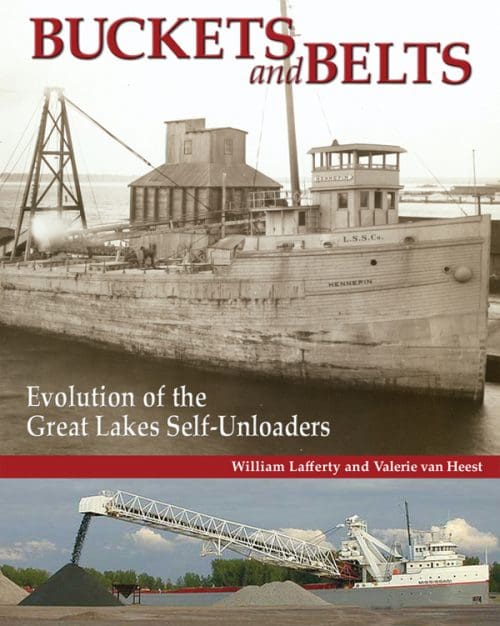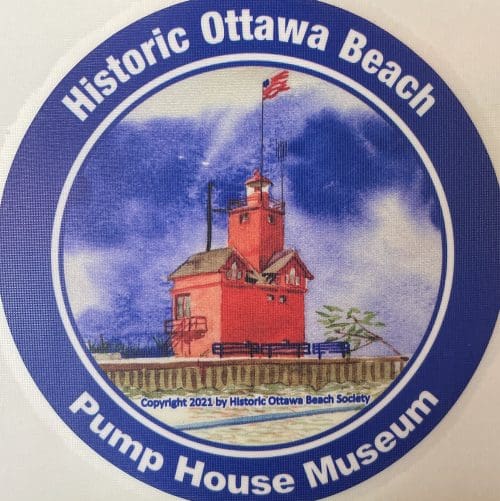-

Holland Harbor's South Pierhead Lighthouse, known as BIG RED, was not always BIG, not always RED, and not always a LIGHTHOUSE.
The fascinating and misunderstood history of Holland's navigational aid began when the United States Lighthouse Board erected a small beacon light at Holland in the 1870 after visionary Dutch settlers spearheaded the development of a navigable channel- one that connected their new colony on the shores of Black Lake with Lake Michigan, the Great Lakes, and beyond. That first light and three navigational aids built as improvements over the next 66 years played critical roles in safely guiding mariners along Michigan's treacherous coast and into Holland's harbor, allowing the town to develop first into a busy commercial port and later into a tourist destination. In time, the lighthouse became an endearing cultural icon, however, technical advances in navigation rendered it obsolete and facing possible demolition. In the 1970s a new generation of visionary Hollanders formed the Holland Harbor Lighthouse Commission to preserve the structure, which they affectionately branded "Big Red." Their efforts led to its listing on the National Register of Historic Places and secured its future. Big Red still stands sentinel at the channel mouth. It can be seen from Holland State Park, which is visited by some two million people per year. However, unlike any other Michigan lighthouse, this iconic structure is surrounded by privately owned land, which impedes public access. This book explains how that came to be and provides written and visual access to one of Michigan's most photographed and recognizable lighthouses. -

Evolution of the Great Lakes Self-Unloaders
A Must-Read for Boatnerds and Shipwreck Enthusiasts On a warm summer afternoon in 1927 off South Haven, Michigan, an old barge began taking on water. Helpless to staunch the flow and realizing their vessel would inevitably sink, the crew escaped to the accompanying tug, and watched as their ship plunged beneath Lake Michigan. Its loss unlamented, its career unheralded, it slumbered on the sandy bottom in the same obscurity that had shrouded its earlier work days as a steam freighter sailing the Great Lakes. However, the vessel’s anonymity ended in 2006 when Michigan Shipwreck Research Associates located the sunken wreck of the Hennepin. It is now listed on the National Register of Historic Places as the world’s first self-unloading vessel. Buckets and Belts: Evolution of the Great Lakes Self-Unloader traces more than a century of innovative technological advancements in the conveying of bulk cargos from the Hennepin’s conversion to a self-unloader in 1902 to today’s mammoth thousand-foot long lakers. Enhanced with the most comprehensive collection of self-unloader images ever published and dozens of underwater photographs, the book also explores the lives of the people who designed these vessels, the crewmen who sailed them and the self-unloaders that tragically went to the bottom, often taking entire crews with them. -

The True Story of America’s Authentic Dutch Windmill
America's only authentic operational Dutch windmill, De Zwaan serves as Holland, Michigan's iconic connection to the community's roots. Believed to have been built in 1761, then moved to the village of Vinkel in North Brabant, the Netherlands, where it produced flour for eighty years, the windmill was dismantled, shipped to the United States, and reassembled in 1964. For more than a half-century, "The Swan" (the translation of De Zwaan) has drawn visitors from all over the world. Alisa Crawford, De Zwaan's miller- and the only Dutch certified miller in the United States- shares a fascinating look at the story of this historic structure as well as other American- and Dutch-built windmills. Through years of research and interviews with people connected to De Zwaan, she reveals the true origins of its construction, the damage it sustained in World War II, its journey to America, its resurrection as a working mill, its rise as a premier Midwestern attraction, and even the effect its relocation had on the village of Vinkel. Delivering the only complete story of this working mill and an extraordinary collection of images spanning its life in the Netherlands and America, this book is a collector edition to commemorate De Zwaan’s productive and lengthy career and the City of Holland’s commitment to this significant monument of living history. -

The Mysterious Disappearance of NWA Flight 2501 and the Quest for Answers
“A terrific book! In-depth and intriguing.” – CLIVE CUSSLER As a furious squall swept down Lake Michigan on June 23, 1950, a DC-4 with 58 souls on board flew from New York toward Minnesota. Minutes after midnight Captain Robert Lind requested a lower altitude as he began crossing the lake, but Air Traffic Control could not comply. That was the last communication with Northwest Airlines Flight 2501. Shredded human remains washing up on the beaches of West Michigan served as evidence of the country’s worst commercial aviation disaster. The Navy and Coast Guard never located the wreck, rendering it impossible to determine a cause for this tragic accident. Over a half century later, nationally acclaimed author and explorer Clive Cussler of the National Underwater Marine Agency teamed up with the Michigan Shipwreck Research Association to pick up the search where the government left off and attempt to solve the mystery of the plane’s disappearance. This gripping and suspenseful narrative begins as the team sets out upon its quest, an expedition fraught with disappointments and surprising discoveries as the explorers plow through archives and scour the lake bottom. An unexpected meeting with a victim’s son prompts a search of a different kind, one that would be more illuminating than submerged sections of twisted aluminum. Weaving past and present together through meticulous research and heart-rending interviews, V. O. van Heest paints a captivating portrait of the victims, vividly recreates the last few hours of Flight 2501, and reveals that the answers are sometimes found in unexpected places. -
Out of stock

Shipwrecks of Ottawa County Michigan
The lyrics of the hymn Eternal Father Strong to Save pay homage to sailors who risk their lives in the course of everyday work and aptly express the intriguing maritime heritage of Ottawa County, Michigan, a region along the eastern shore of Lake Michigan that saw many a ship and sailor lost. The lakeshore communities of Grand Haven and Holland became thriving commercial ports in the latter half of the 19th century and bore witness to the evolutionary changes in Great Lakes transportation. Early wooden sailing vessels were replaced by wooden steamers, which soon made way for steel vessels, which grew to include today’s “thousand footers.” Schooners laden with lumber and stone gave way to luxury passenger steamships ferrying Chicago’s wealthy tourists to Ottawa County’s grand tourist hotels. Families were changed forever when husbands and sons were lost to the gales of November, and fortunes were lost when vessel owners tried to get just one more trip in before the harsh winters closed the ports. Many of these vessels were simply overtaken by age, mechanical failure or shifting sands. Some broke up on shore while others were refloated to sail again. Some were left to rot at the dock while others simply sailed over the horizon into oblivion never to be seen again. Many now serve as “ice water museums,” attracting scuba divers, explorers and historians to these shipwrecks that comprise an important part of the early history of Ottawa County and the Great Lakes region as well.












